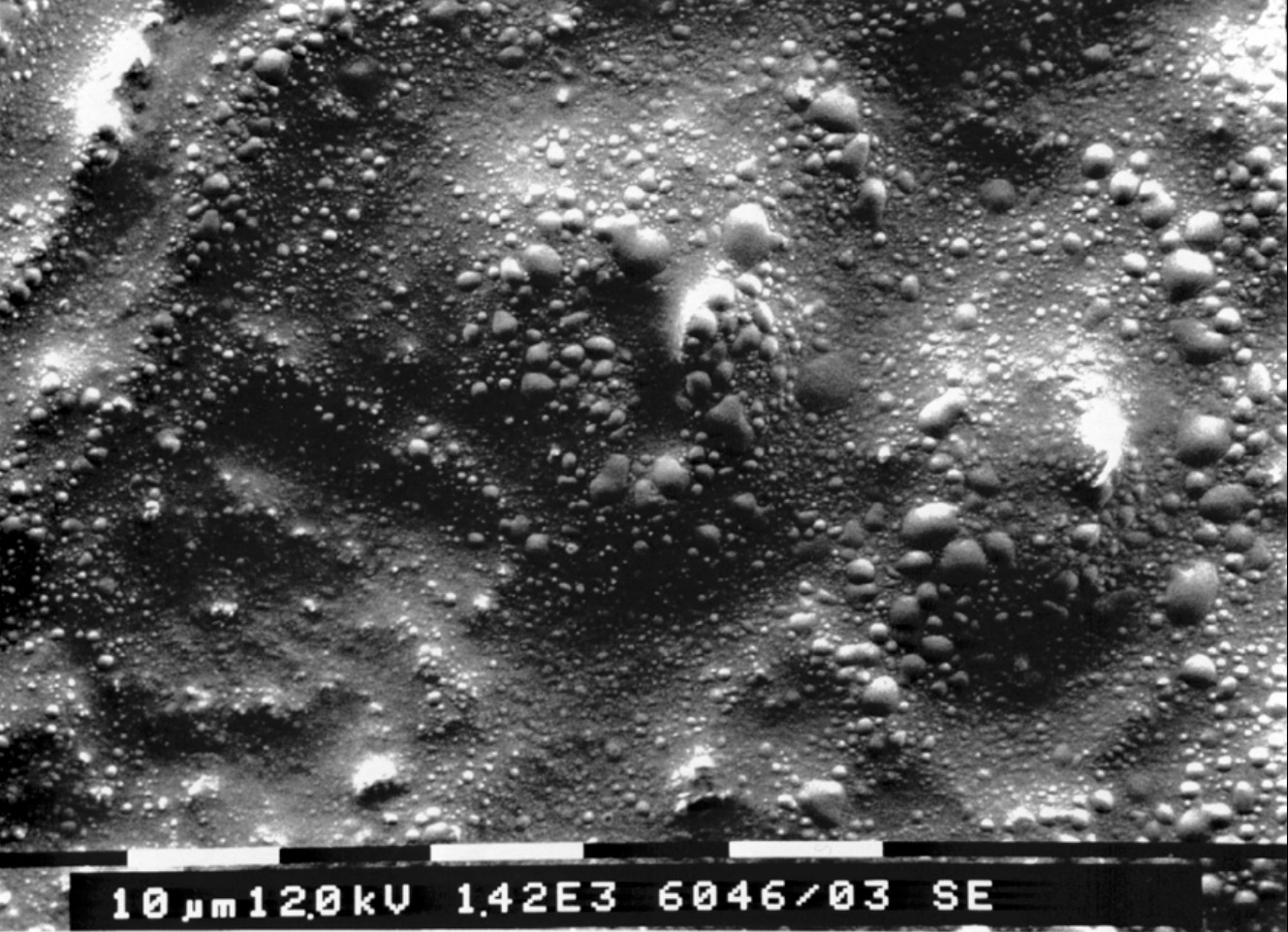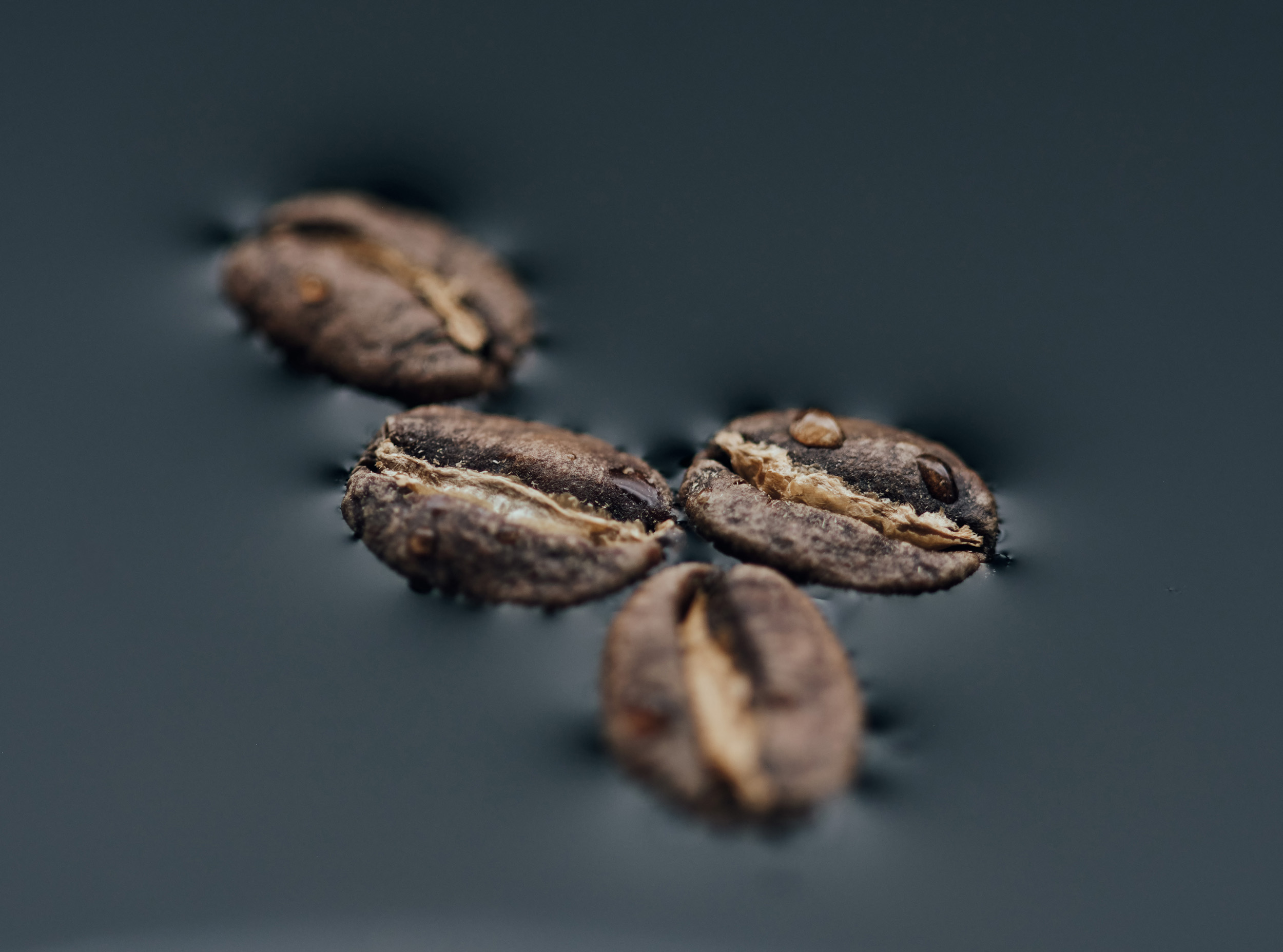Video: A 15 minute time-lapse video showing the progression of the layers in the brewing process.
When you pour water onto coffee grinds, after a few seconds a bubbly crust forms on the top. The way you deal with this crust can have big implications on the extraction levels you obtain.
The crust forms as a result of the roasting process, which causes coffee beans to become microporous. The pores in roasted coffee typically measure 20–50 nm in diameter (Schenker et al., 2008). The following photograph from Schenker’s research reveals thousands of pores contained inside a single cell of a coffee bean.
 Picture: The coffee in this image is a very dark roast, and oil can be seen exuding from individual pores in the cell wall. (Source: Schenker et al., 2008)
Picture: The coffee in this image is a very dark roast, and oil can be seen exuding from individual pores in the cell wall. (Source: Schenker et al., 2008)
The effect of coffee’s microporous structure is that coffee particles are able to float in water for a short time, until the pores become sufficiently full of water to make them dense enough to sink. It takes longer for water to penetrate the largest particles, so it follows that the bigger the particles are, the longer they can remain buoyant. After pouring water onto your coffee grinds, even if you successfully surround every grind with water, a large amount of the bigger grind particles, known as boulders, will float up to the surface. You can observe the extreme of this phenomenon via a simple experiment with whole coffee beans. Good-quality green beans (unroasted) will sink when immersed in water. But whole roasted coffee beans will not sink below the surface of the water — even if you leave them in water for over 24 hours. This is a function of the large volume of gases trapped inside the unruptured cells of the beans and their hollow, microporous structure.
Many immersion brew methods, such as French press, require a coarse grind. A typical grind setting for a French press would see the aperture between the coffee burrs around 800 um apart. That means there can be many layers of unruptured coffee cells inside a single coffee particle that will take some time for the water to fully penetrate. It’s not only the boulders in the crust that float; bubbles of gases (composed mostly of carbon dioxide) can hold onto many small particles, known as fines, that gather on the films of the bubbles in the crust.
The cell walls of coffee beans lose their integrity during the roasting process as they dry out and expand — coffee beans can double in size during roasting which makes it easier for water to penetrate into the centre of each grind. Water will flood insides of pores in the grinds eventually, however, this process occurs much faster with fine particles (fines. Fines are a little more likely to lose their buoyancy and sink to the bottom of a cupping bowl sooner than boulders (larger particles).
